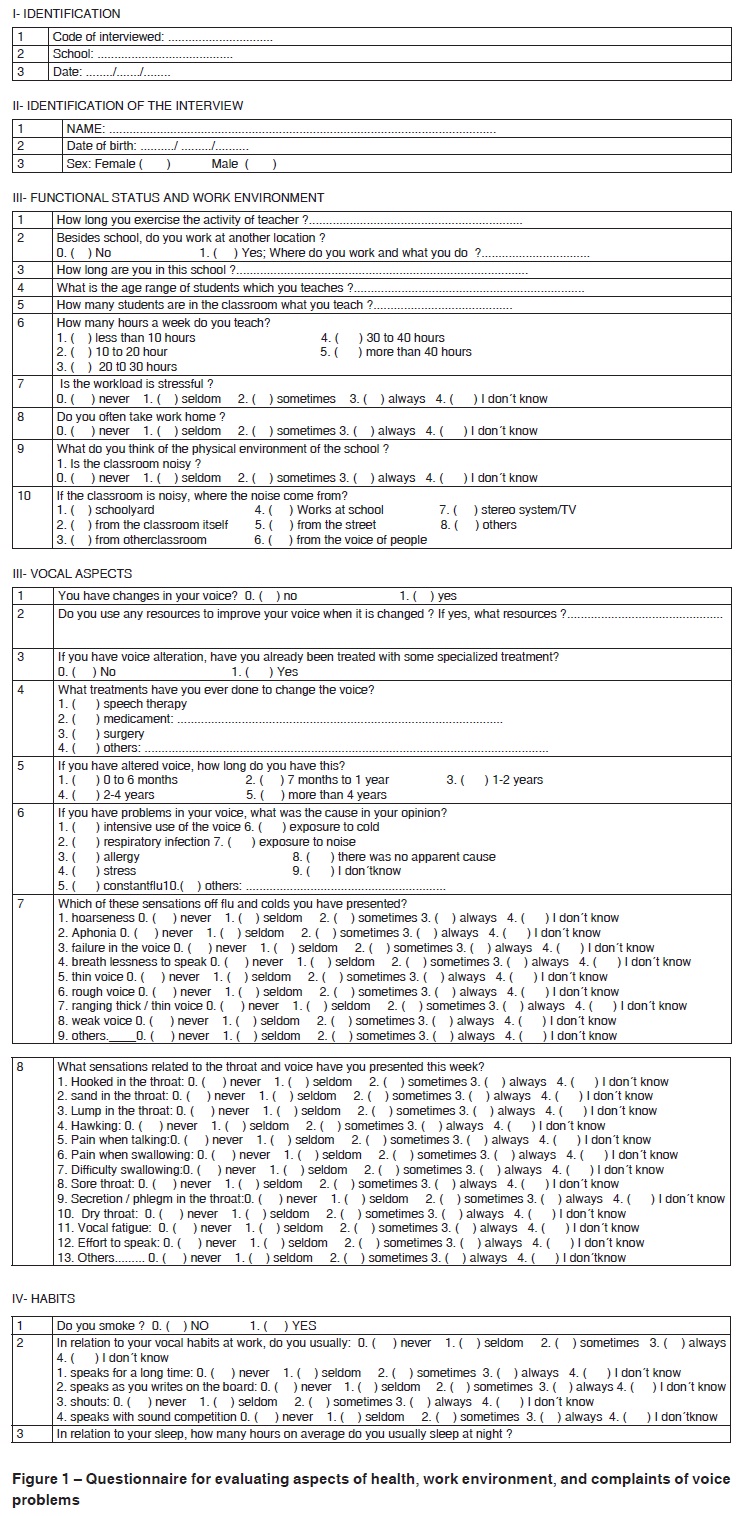PURPOSE: conduct a prospective study to analyze risk factors for dysphonia in teachers, associated with presence of vocal alterations. METHOD: one-hundred-and-two teachers (81 women and 21 men) were randomly selected from 11 schools in Piracicaba/SP, with mean age 42.48 years. A questionnaire covering aspects of the work environment and organization, vocal behavior, lifestyle and signs and symptoms of vocal alterations was applied. Acoustic analysis was performed and the dependent variables assessed were Fundamental Frequency and mean Vocal Intensity. There were associations between questionnaire variables and Fundamental Frequency, and mean Intensity. The following statistical tests were used: Chi-square, Fisher's Exact Test and Odds Ratio calculation. RESULTS: individuals of the male gender had less chance of presenting altered fundamental frequency of the voice than the female gender (p<0.0001). Teachers who had been teaching elementary II and middle school had less chance of presenting alteration in fundamental frequency of the voice than those who taught in (first grade) primary schools I (p=0.04). The environmental noise was significantly associated with alteration in mean voice intensity (p=0.02). CONCLUSION: factors such as female gender, teaching in primary school and exposure to work environment noise are considered risk indicators for voice disorders.
Occupational Health; Voice Disorders; Faculty; Risk Factors




